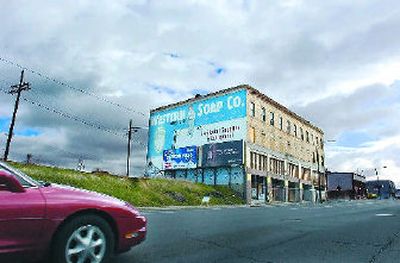Time to update the plan

As more and more people find their way to downtown Spokane, the city is going to have to consider ways to accommodate larger numbers of pedestrians.
Ron Wells, a downtown business leader, says there are plenty of wide arterial streets but not enough pedestrian amenities: benches, green spaces, improved sidewalks, planters, drinking fountains, extended sidewalks at some intersections.
Sure, Riverside Avenue west of Monroe Street has a tree-lined median with a few benches, and Spokane Falls Boulevard along Riverfront Park has been an inviting place to be on foot.
But much of downtown is a mass of concrete and asphalt.
Thousands of new residents are expected to make Spokane home in the next two decades. Already, more than 300 new multifamily housing units have been approved under a tax-exemption program designed to increase the number of people living in the heart of the city. Retail and nightlife trade has improved steadily in recent years.
Wells is calling on city leaders to update an 8-year-old downtown plan to set the stage for the changing human environment downtown.
“Pedestrians have as much right to cross the street as cars have a right to speed down the street,” Wells said last week.
He contends that having an updated plan is essential for making downtown work. “If you don’t have a plan, the pieces don’t fit,” he said. “Public policies, economic development strategies determine the urban dynamic, the urban form.”
Marty Dickinson, president of the Downtown Spokane Partnership, said her organization is launching an effort to update the plan with a series of meetings later this spring to solicit input from the public. The partnership, made up of downtown property owners, also expects to ask City Hall to contribute to the work.
Dickinson said that since the last downtown plan was approved by the City Council in 1999, downtown Spokane has seen $3 billion in new investment. Projects have included the Davenport Hotel, Steam Plant Square, Fox Theatre, the expanded Convention Center and River Park Square, although some of those projects were under development when the plan was adopted.
An updated plan would consider:
•Establishing alternate modes of transportation such as an expanded streetcar system.
•Integrating the emerging University District with downtown.
•Keeping the planned Kendall Yards development on the north bank of the Spokane River connected with downtown.
•Improving the so-called “streetscape” for pedestrians.
•Revisiting zoning regulations, including finding a balance between building heights and view corridors.
The cost to hire a consultant for the new plan is estimated at $150,000 or more, or about half of what was spent on the plan eight years ago. Dickinson said the Downtown Spokane Partnership hopes to raise money from private sources on top of a contribution from the city.
Councilman Al French, a member of the partnership’s board, said he is recommending that the city contribute about half of the cost and that the Spokane Transit Authority also participate.
“I think it’s probably one of the best investments we can make,” French said, pointing out that the city financed all of the original work in 1999. “We received significant dividends from that original investment.”
French also is a supporter of using city resources to write land-use plans for other business and residential neighborhoods.
Cody George, the city’s economic development adviser, said the plan needs to consider the changing character of downtown, which no longer is just a 9-to-5 workplace but “is really starting to be a lively place all day long and through the weekend.”
At a recent appearance before the City Forum civic group, Wells made the argument that a 1999 downtown plan that called for more street-level retail shops, expansion of the Convention Center, restoration of the Davenport Hotel and Fox Theater and other projects has been a success with new investment in restaurants, hotels, shops, condos and arts venues.
“That’s a pretty incredible result,” Wells told the forum, noting that he has five condo projects in the works. He said prospective condo buyers from out of town are interested in choosing Spokane for a second or third home because they want the urban downtown experience combined with the region’s pleasant summer climate.